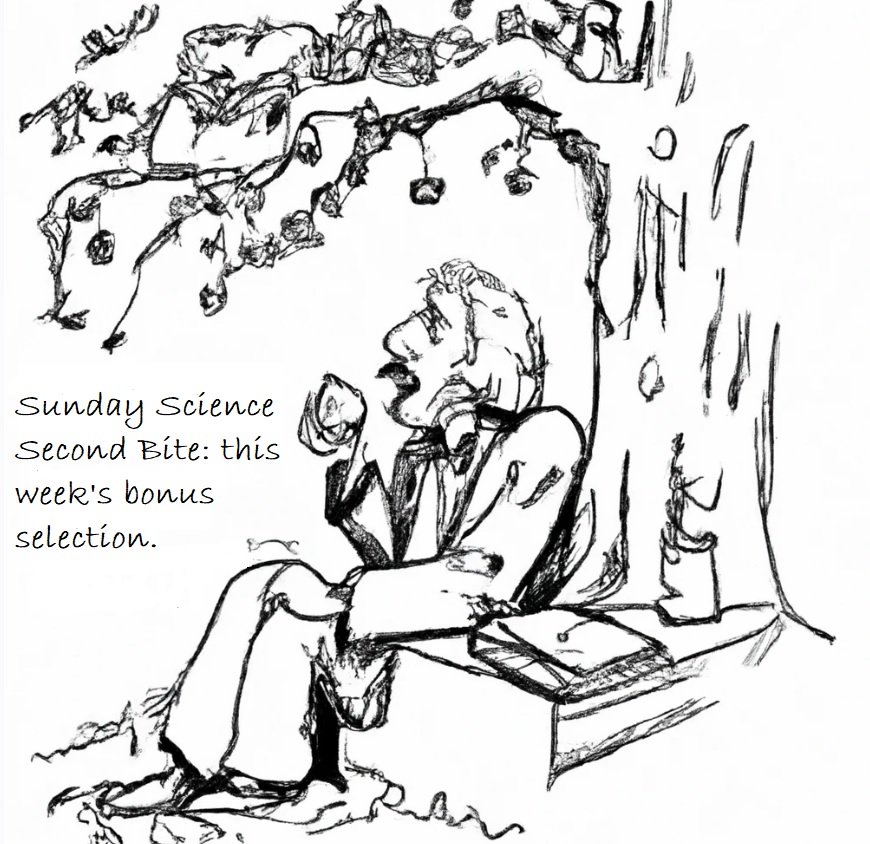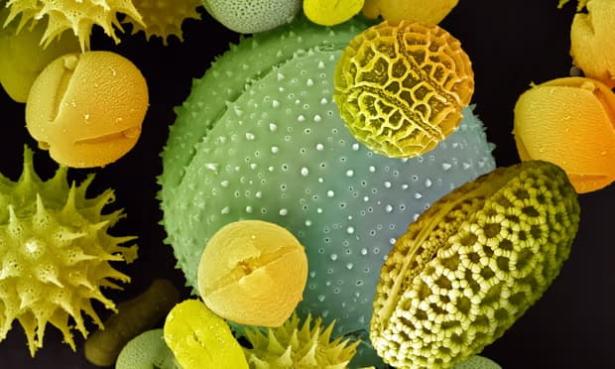You might think, with the completion of the Human Genome Project 20 years ago now, and the discovery of the double helix enjoying its 70th birthday this year, that we actually know how life works. In physics, the quest for a so-called Grand Unifying Theory has preoccupied the most ambitious minds for generations, alas to no avail. But in the life sciences, we managed to find four grand unifying theories in the space of 100 years or so. Three are well known: cell theory – all life is made of cells, which only come from existing cells; Darwin’s evolution by natural selection; and universal genetics – all life is encoded by a cypher written in the molecule DNA. The fourth, no less important, goes by the chewy name chemiosmosis, and describes the way that all living things live by drawing fuel from their surroundings and using it in a continuous chemical reaction. In summary, life, made of cells that extract energy from their environment, comes modified from what came before. Job done; suck it, physicists!
However, biology is messy, and though we have these laws in place to describe all life on Earth, people like me remain gainfully employed because our understanding of how chemistry becomes biology is far, far from complete. These grand unifying ideas are unbeatable, but they lack detail, and in biology the devil lies at a molecular level of complexity that is hard to understand. Nowhere, as Philip Ball (a physicist by background) points out in his excellent new book, was this more starkly apparent than when an invisible virus turned the world upside down in 2020, killing millions, infecting many more. But while for some people it was lethal, or created myriad symptoms that would last for months or even years, for others it was akin to a mild cold, or even entirely symptomless. We do not know why this was the case.
How Life Works is a much more appealing title than the rather overused question of “what is life?” that was the one given to a series of influential lectures and an accompanying book in 1944 by Erwin Schrödinger – more famous for his hypothetical box containing a non-committal quantum cat – and ever since, this question has been borrowed by many wishing to seem profound. I find it largely pointless, and somewhat antithetical to scientific thought itself. We should be less concerned with what a thing is, and rather more focused on what a thing does. To define a living thing is a kind of creationist question, for it implies an immutable ideal type, but this runs counter to one of our grand unifying laws: the Darwinian principle that living things are four-dimensional, ever changing in time as well as space.
But it’s an idea that is deeply embedded within our culture: a vital force, the spark of life, an elusive but essential quality that distinguishes the quick and the dead. What is life? Tricky to pin down, but we know it when we see it, to paraphrase US Justice Potter Stewart in 1964 (admittedly, he was referring to an intangible definition of pornography).
Ball points out that we rely on metaphors and analogies to explain and explore the wicked complexities of life, but none suffice. We are taught that cells are machines, though no machine we have invented behaves like the simplest cell; that DNA is a code or a blueprint, though it is neither; that the brain is a computer, though no computer behaves like a brain at all.
It’s a funny thing that we strive to reduce the most complex entities in the known universe – living things – to a simple description. We crave narrative satisfaction in untangling systems, but evolution has a 4bn-year head start on us, and had no plan, nor any concession to ever being understood by one of its clever fruits. James Watson, half of the pair who published the double helix structure of DNA in 1953, once wrote that the other half, Francis Crick, had burst into the Eagle pub in Cambridge and declared that they had discovered the “secret of life” (though in 2017 Watson himself admitted that he’d invented the whole scene for dramatic effect). Ball points out that we don’t try to do this with art, or other matters of extreme beauty: no reader or scholar tries to isolate and distil the “secret of Dickens”.
These simplifications and analogies arise because it’s not good enough to simply deploy the condescending mantra “it’s a bit more complicated than that” and expect students not to be overwhelmed and bored. But Ball wonders if the models we use in our teaching reduce complexity without acknowledging that it’s there, as if we are trying to get that complexity out of the way so we never have to think about biology again. I am reminded of a better mantra, that of the statistician George Box: all models are wrong, but some are useful.
Ball builds a nice analogy with language, as we often do in genetics. How do you get from the dictionary to literature he asks? Well, it’s something like: words (+magic) > sentences (+magic) > chapters and books. The equivalent in a living organism is: genes (+magic) > proteins (+magic) > cells (+magic) > tissues and bodies.
Except of course the magic is not supernatural, it’s just the stuff that we don’t yet know, or can’t explain simply, which is the meat of how life works. The book follows the flowchart: there’s an exploration of the fundamentals of genetics, of how the way we teach and think about genes is not reflected in what geneticists know. There are no specific genes for complex human traits or behaviours, yet this misconception – often deployed in headlines as “Scientists discover the gene for … ” – is culturally embedded. Emerging evidence suggests that the way we teach genetics to children reinforces not only this error, but a version of racial essentialism long abandoned by science.
Ball scales up from genes to proteins, and cells and networks, and in doing so we get stuck into the unexplored magic that gets us from chemistry to biology, all the while dismissing the egregious idea of nature v nurture: “I cannot stress enough,” he intones, “life works at all only in relation to its environment.”
Ball is a terrific writer, pumping out books on incredibly diverse subjects at a rate that makes me feel jealous and inadequate. There’s a wealth of well-researched information in here, some details that are a bit chewy for the lay reader, and I question the utility of black-and-white illustrations of proteins that are unrevealingly complex and thus unenlightening. But other than that, the book serves as an essential primer on our never-ending quest to understand life. Ultimately, “what is life?” is a question without a useful answer. “How does life work?” is the question that should drive the next wave of aspiring biologists from the cradle to the grave.
Adam Rutherford is a scientist and author of Where Are You Really From (Wren & Rook). As a PhD student he was part of a team that identified the first genetic cause of a form of childhood blindness. He worked as an editor at the journal Nature, and has written several books beginning with CREATION, on the origin of life and synthetic biology, which was shortlisted for the Wellcome Trust Prize.
On radio, he presents BBC Radio 4’s weekly programme Inside Science, and with Dr. Hannah Fry, the Curious Cases of Rutherford and Fry. He's also written and presented documentaries on subjects ranging from the history of sex, the evolution of morality, to the MMR-Autism scandal, several award winning television documentaries, including The Cell (2009), The Gene Code (2011), the Beauty of Anatomy (2014), and Playing God, on the rise of synthetic biology for the BBC’s long-running science series Horizon, appeared on programmes including James Cameron’s The Story of Science Fiction (2018), University Challenge (2016) and worked on a number of films as a scientific consultant including Annihilation (dir. Alex Garland, 2018), Ex Machina (dir. Alex Garland, 2015), Life (dir. Daniel Espinosa, 2016), Bjork: Biophilia Live (dir. Peter Strickland, 2014), Kingsmen: The Secret Service (dir. Matthew Vaughan, 2014).
Please consider supporting the Guardian’s journalism as we enter one of the most consequential news cycles of our lifetimes in 2024.
With the potential of another Trump presidency looming, there are countless angles to cover around this year’s election – and we'll be there to shed light on each development in the 2024 election, with explainers, key takeaways and analysis of what it means for America, democracy and the world.
From Elon Musk to the Murdochs, a small number of billionaire owners have a powerful hold on so much of the information that reaches the public about what’s happening in the world. The Guardian is different. We have no billionaire owner or shareholders to consider. Our journalism is produced to serve the public interest – not profit motives.
And we avoid the trap that befalls much US media: the tendency, born of a desire to please all sides, to engage in false equivalence in the name of neutrality. We always strive to be fair. But sometimes that means calling out the lies of powerful people and institutions – and making clear how misinformation and demagoguery can damage democracy.
From threats to election integrity, to the spiraling climate crisis, to complex foreign conflicts, our journalists contextualize, investigate and illuminate the critical stories of our time. As a global news organization with a robust US reporting staff, we’re able to provide a fresh, outsider perspective – one so often missing in the American media bubble.
Around the world, readers can access the Guardian’s paywall-free journalism because of our unique reader-supported model. That’s because of people like you. Our readers keep us independent, beholden to no outside influence and accessible to everyone – whether they can afford to pay for news, or not. If you can, please consider supporting us just once from $1, or better yet, support us every month with a little more. Thank you.
Betsy Reed
Editor, Guardian US
How Life Works by Philip Ball is published by Picador (£22). To support the Guardian and Observer, order your copy at guardianbookshop.com. Delivery charges may apply.

Tools of the Wild: Unveiling the Crafty Side of Nature
By Michael Haslam and Abigail Desmond
Sapiens
Once considered a uniquely human activity, tool use has been spotted across diverse species. It’s time to rethink what tools reveal about their users’ intelligence and evolution.
February 7, 2024


Spread the word